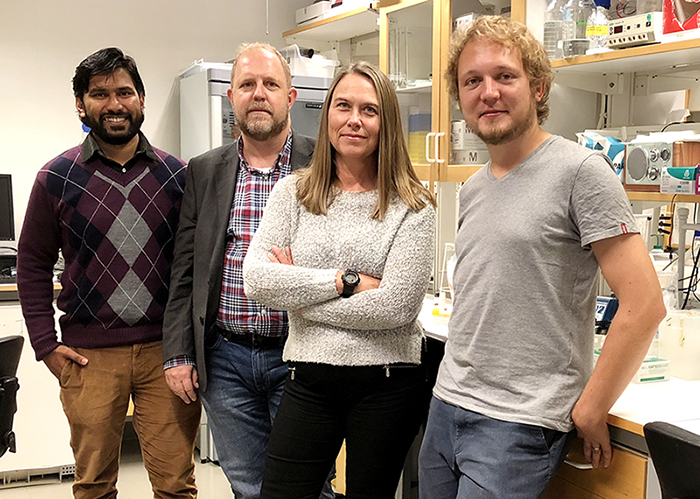Researchers may have figured out one way acne bacteria defies treatment

Researchers at KTH have discovered how acne-causing bacteria feed off their human hosts, opening the possibility for finding effective ways to treat severe acne.
A research team in structural biology worked out the details of how the common bacterium, Cutibacterium acnes, a natural habitant of human skin microbiota, feeds on certain carbohydrate chains on its way to becoming pathogenic and causing what we know as acne – a condition where hair follicles become clogged with dead skin cells and oil.
“Our results can provide a clue to why acne is so difficult to treat,” says Christina Divne , Professor in the Department of Industrial Biotechnology at KTH. The study was published in PLOS One
The researchers report the discovery of special enzymes in acne bacteria that together form an enzyme system with the ability to break down N-glycans, which are carbohydrate chains that are linked to human proteins. Like other oligosaccharides, which are polymer compounds containing simple sugars, N-glycans play an important role in the body, for instance in the immune system. As part of the body’s immune response, N-glycans modify certain proteins in the body, such as antibodies, to ensure the correct structure and function in fighting antigens such as viruses and bacteria.
However, Divne says their findings suggest that the C. acnes metabolism not only enables the bacteria to make a nutritious meal of N-glycans but could also produce a mechanism that allows it to circumvent the human immune system.
“The reason that the bacterium breaks down N-glycans can be for nutrition or for overriding our defense against the bacterium,” Divne says. The researchers examined the three-dimensional atomic structure of the enzymes to get experiment support for its hypothesis, which they will continue working with.
Co-author Henrik Aspeborg says there is still more to examine. “So far, there is still very little known about how bacteria break down and metabolize human glycans,” he says.
"In a few years, when we hopefully have a more complete picture of how the acne bacteria metabolizes our N-glycans, we will be in a great position to fight back against serious forms of acne.”
Håkan Soold/David Callahan


